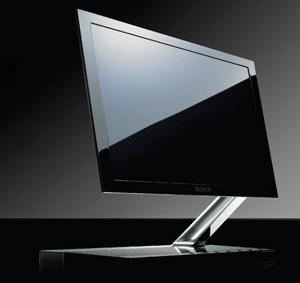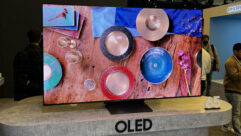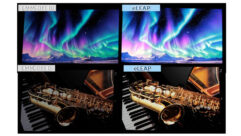

Whither OLED?
As befits organic light emitting diode displays-technology that’s long on promise but short on critical mass-last month was abuzz with OLED-related news bits that separately did little more than register as blips on the PRO AV radar, but collectively illustrated a product category rife with potential.
AS BEFITS ORGANIC LIGHT EMITTING Diode displays—technology that’s long on promise but short on critical mass—last month was abuzz with OLED-related news bits that separately did little more than register as blips on the pro AV radar, but collectively illustrated a product category rife with potential.
In the category of things you can actually touch, Sony was back at it with a pair of OLED-related technology demonstrations. (Earlier this year Sony began shipping the XEL-1, an 11-inch OLED television that’s only 1.4 millimeters thick—and costs $2,500.) At the April NAB Show in Las Vegas, the company took the wraps off its first OLED color professional camera viewfinder, the HDVF-EL100.
In explaining why OLED makes sense for a pro camera, Rob Willox, director of Sony Electronics’ content creation group, says, “High-definition acquisition requires extremely precise focusing, allowing the operator to accurately see contrast and color levels when framing a shot.”
The HDVF-EL100 has a pixel resolution of 960×540 and an 11-inch display (that’s right, the viewfinder is as big as Sony’s OLED TV). It’s scheduled to be available later this year at a yet-unknown price.
Half a world away at the Display2008 conference in Tokyo, Sony showed a display based on OLED technology that’s about 0.3 millimeters thick—the thickness of some photo paper stock. The blogosphere was abuzz over the prototype, praising it for all the features that show such promise: high contrast ratio, quick response times, and sharper colors than today’s LCD or plasma technologies.
So it’s not surprising that research analysts are also buzzing to describe the OLED market opportunity. By all estimates, it’s negligible now but set to grow as manufacturers address cost, manufacturing, and display life issues.
“2008 will be a break-out year for [active matrix] OLED displays as Samsung SDI, LG Display, Sony, and CMEL deliver almost 17 million displays,” says Barry Young, senior advisor and consultant for Austin, Texas–based research firm DisplaySearch. Notably, The first displays will go into mobile phones, digital cameras, and other non-pro products. “By 2009, OLED manufacturers are expected to commence shipments of displays for notebooks and then move rapidly into TVs,” Young says.
DisplaySearch expects shipments to rise to almost 119 million in 2012. (Experts think Sony is currently cranking out just 1,000 OLED TVs per month.)
But if they build it, will customers come? Display-bank, a South Korean researcher, showed the Sony OLED TV to user panels and said 80 percent found the OLED’s image quality superior to an LCD TV. Interestingly, the most important value propositions for users were thickness, color, and response time. Energy efficiency, a differentiator for OLED, was not as high on survey respondents’ list of must-haves.
Prithvi Raj, a research analyst for consulting firm Frost & Sullivan of Palo Alto, Calif., says OLED has had “a pretty impressive track record of improvement and innovation.” In a Web presentation, he went was far as to say that by 2013, OLED would replace LCD in small display applications.
But Raj also pointed out the significant challenges OLED faces, not the least of which is the well-known problem of blue OLEDs’ limited lifetime. “Low-cost LCD displays and better LCD quality are also threats to OLED,” Raj says.
Over the long-term, most people agree manufacturers will solve OLED’s technological challenges, but as existing flat panels get better and more commoditized, who will clamor for something new?










